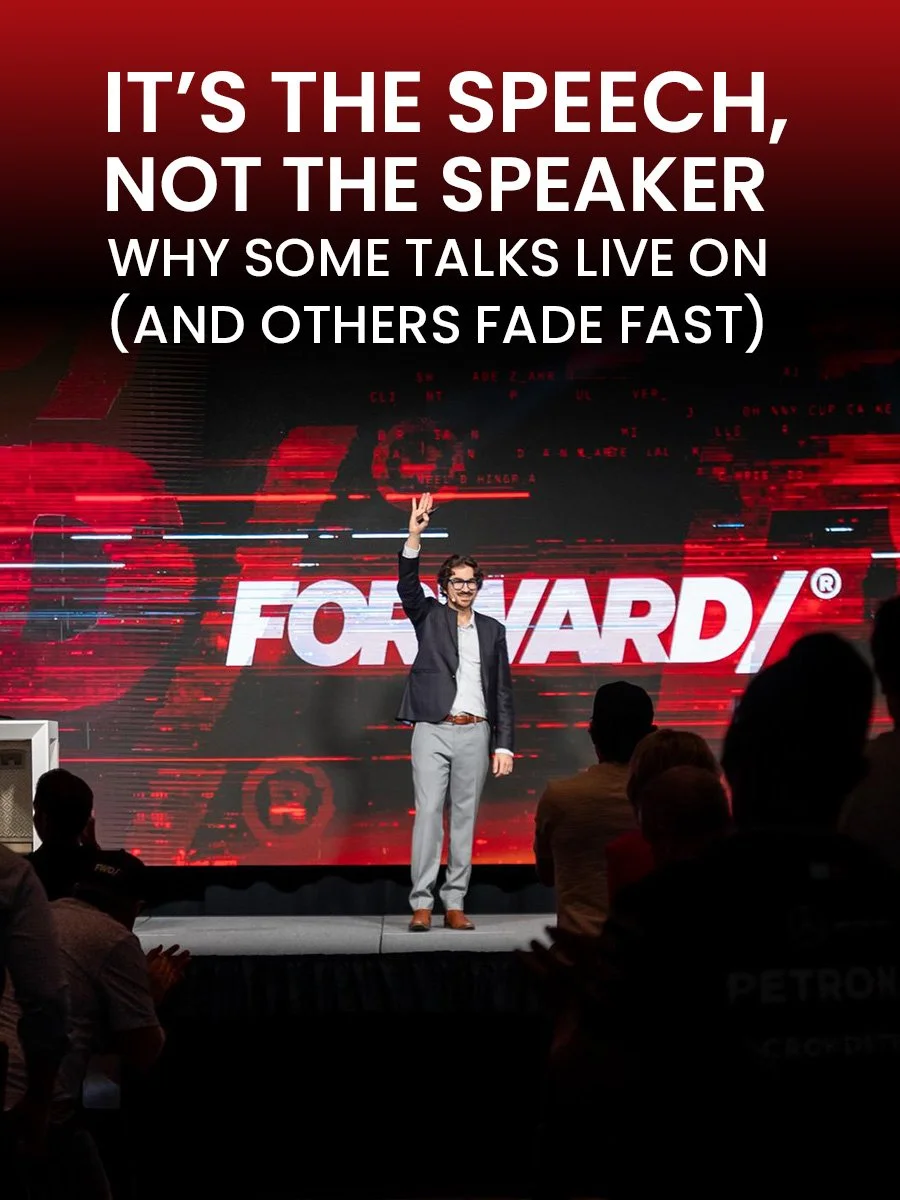Designing a Keynote That Gets You Booked, Rebooked, and Referred
Lessons from Brian Miller
Most keynote speakers are smart, passionate, and well-intentioned.
But most keynotes? Forgettable.
This session changed how I think about that.
Hi - I’m Kingsley Alfred, Community Coordinator here at The SpeakerPath®. This article breaks down the most powerful lessons I took from a recent masterclass led by Brian Miller, a full-time magician turned international keynote speaker. What stood out wasn’t just the performance advice - but how to actually design a keynote that moves people, and books more business because of it.
To watch the full masterclass, log into The SpeakerPath® Community and access the talk in the video vault.
If you’re not a member yet of The SpeakerPath® Community, join here.
Now let’s get into it.
Lesson 1: You’re Not Being Paid to Speak
You’re being paid for what happens after you speak.
The applause is nice. The standing ovation might feel good. But the real value is what sticks. What sparks conversation. What shifts how people think or act after the session ends.
Your job isn’t to get everyone to agree. It’s to get them talking.
That’s the difference between a good talk and a rebooked one.
Lesson 2: The Five Talks That Fail
These styles show up all the time. They don’t work.
1. The Annoying Academic
All theory, no application. You sound smart, but the audience checks out.
2. The Data Dump Truck
You cram every stat, slide, and story into one session. Nothing lands.
3. The Applause Seeker
You chase validation instead of offering value. They clap but leave empty.
4. The Miracle Worker
You try to fix everything in 45 minutes. Nothing sticks.
5. The Idea-Down Speaker
You speak about what excites you, not what the audience came for.
The fix? Build your talk around one clear action, one big idea, and one tight message.
Lesson 3: Start With the End
What do you want them to do after your talk?
That’s your anchor. It should shape your stories, examples, and structure.
The best action steps are:
Clear – No decoding required.
Achievable – No budget, no buy-in, no 6-month timeline.
Immediate – Something they can try this week.
Example: “Have a 10-minute, agenda-free listening session with someone on your team.”
Simple = memorable.
Lesson 4: Build the Premise
What do they already believe?
A premise isn’t something you convince people of. It’s something they already know.
It’s the foundation of persuasive communication: a shared truth your audience accepts without needing proof.
If you have to convince them it’s true, it’s not a premise.
A Good Premise Sounds Like This:
“Leadership today is daunting.”
“The world moves faster and is more unpredictable than ever before.”
“Change comes at us fast. We hardly have enough resources to handle today’s crisis, let alone tomorrow’s.”
“There are unlimited problems to solve, but resources are often limited.”
These all work because the audience hears them and immediately nods, as if to say, yes, that’s true.
Now they’re in. And you can get to work.
What Makes It Work?
A strong premise is:
Already true for the audience (they experience it or agree with it)
Simple and direct (not clever, not new)
Emotionally resonant (hits a nerve, not a stat)
Use a premise to grab attention and ground the room.
Lesson 5: Find the Core Message
What do you want them to remember, and repeat?
Your core message is the sentence that carries your talk. The one thing you want your audience to understand and adopt.
It’s not a title. It’s a clear, directional sentence built from three pieces:
What you do (behavior or action)
Who it’s for (specific audience)
Why it matters (the consequence or benefit)
And you put them together like this: For AUDIENCE to ACTION so that IMPACT.
We call this The Filter Framework (learn more in this article).
For example: “We help first-time founders translate conviction into language, so their team and customers don’t have to guess what they stand for.”
What Makes It Work:
It’s a full sentence, not fragments.
It names a real audience, not “everyone.”
It drives toward a paradigm shift with consequences.
Write it down, put it at the top of every document, and whenever you’re working on a piece of communication ask yourself:
Does this [story/stat/example/joke] immediately and obviously support my core message?
If not, delete it. It’s got no business taking up precious real estate in a world of low trust and high noise.
Final Thought: Don’t Try to Sound Smart
Trying to impress people is the fastest way to lose them.
The speakers who get booked again and again? They’re not the flashiest. They’re the clearest. The most useful. The ones who made people feel seen - and gave them something they could actually do.
So here’s your move:
Choose your core message.
Build your one-page framework.
Rehearse until it flows.
Then walk onstage and deliver a talk that earns buzz - not just applause.
Want help building yours? Book a Discovery Call with one of our lead consultants today.
And if you want feedback, connection, and fresh ideas from fellow speakers, join us inside The SpeakerPath® Community - where standout keynotes (and standout careers) get built, one shift at a time.










Can we agree that "thought leadership" has lost a bit of its cache? It's also rather confusing. What IS thought leadership? I don't know, but I know all true thought leaders do three things: Make assertions, make judgments, and make predictions.
The problem? When I give this advice to my clients they often feel anxious. And when I inquire, they tell me the anxiety comes from a fear of being wrong... but that’s not it. The real fear? It’s the fear of being disagreed with. Publicly.
And that's totally understandable. Disagreement can feel like an attack on your credibility, your authority, or even your identity.
But here’s the thing: there's no leadership without disagreement.